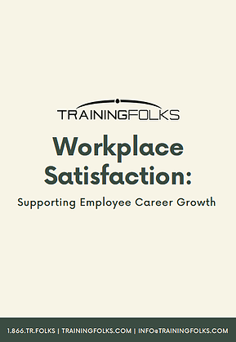Why Employee Onboarding is Important for Employee Experience
Employee Onboarding is critical for any organization, as it sets the stage for a successful and productive  employee experience. But how do you know if your onboarding process is effective? One way to measure success is by evaluating the employee experience.
employee experience. But how do you know if your onboarding process is effective? One way to measure success is by evaluating the employee experience.
There are various ways to measure employee experience during the employee onboarding process. From surveying new hires to tracking retention rates, we will cover a range of methods to help you gauge the success of your onboarding program and identify areas for improvement.
Why Employee Onboarding is Important to Measuring an Employees Experience
The employee's experience begins when they are hired. A well-designed employee onboarding program can help new hires feel welcomed, valued, and prepared to contribute to the organization from day one. On the other hand, a poor onboarding experience can lead to disengagement, low morale, and high turnover.
Employee Onboarding is not just about paperwork, orientation, and compliance. It is about creating a positive and engaging experience for new hires that helps them feel connected to the company, its culture, and its mission. It helps them understand their role, their expectations, and how they fit into the organization. It also provides them with the resources, support, and development opportunities they need to be successful in their new position.
Moreover, it is an opportunity for managers and teams to establish trust and rapport with new hires and build strong working relationships which are critical for a positive employee experience with the company. It also helps new hires understand their role and how they can contribute to the organization, which can help them feel more engaged and motivated in their work.
Benefits of Employee Onboarding
There are many benefits to creating an employee onboarding program. Some of these include:
-
Increased employee engagement and retention: A well-designed onboarding program can help new hires feel welcomed, valued, and prepared to contribute to the organization. This can lead to increased engagement and motivation, and ultimately, a higher retention rate.
-
Improved productivity and performance: By providing new hires with the resources, support, and development opportunities they need to be successful in their new role, an onboarding program can help them hit the ground running and be productive from day one.
-
Stronger company culture and employee alignment: Onboarding is an opportunity to introduce new hires to the company's culture, mission, and values. By aligning new hires with these cultural elements, organizations can foster a stronger sense of belonging and commitment among employees.
-
Compliance and legal requirements: Employee Onboarding is also an important process for ensuring that new hires understand and comply with all relevant legal and regulatory requirements.
-
Better communication and teamwork: Onboarding is an opportunity to establish trust and rapport with new hires and build strong working relationships. It also helps new hires understand their role and how they can contribute to the organization, which can help them feel more engaged and motivated in their work.
How do you measure employee experience?
Measuring employee experience can be a complex process, as it encompasses a range of factors such as engagement, satisfaction, motivation, and overall well-being. This is an important part of the employee onboarding process.
There are several methods that organizations can use to gauge employee experience and identify areas for improvement. These include:
-
Surveys: Surveying employees on a regular basis can provide valuable insights into their experience for example a company "Pulse" survey. This can include measuring engagement, satisfaction, and overall well-being. Surveys can be conducted online, through email, or in person, and can cover a range of topics such as job satisfaction, work-life balance, and communication.
-
Exit Interviews: Conducting exit interviews with departing employees can provide valuable insights into why they are leaving and what the company can do to improve the employee experience.
-
Employee Net Promoter Score (eNPS): The eNPS measures employees' likelihood to recommend their company as a place to work. It is a simple survey that asks employees to rate their level of agreement with the statement "I would recommend this company as a place to work."
-
Employee Retention Rate: The retention rate measures the percentage of employees who stay with the company. A high retention rate indicates that employees are satisfied with their job, and the company is providing them with a good employee experience.
-
Employee engagement: Employee engagement can be measured through surveys, focus groups, or interviews. It captures employees’ level of commitment, motivation, and overall satisfaction with their work.
-
Tracking attendance and punctuality of employees: Tracking attendance and punctuality can be an indirect way to measure employee experience, as it can indicate how engaged and motivated, they are.
It's important to note that, measuring employee experience is an ongoing process, and organizations should regularly track and analyze the data to identify trends and areas for improvement.
If you found this blog helpful and want to learn more,
be sure to download our FREE eBook:
Workplace Satisfaction: Supporting Employee Career Growth


